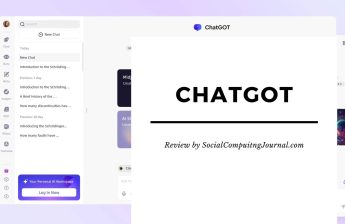When starting on a new website project, most designers focus on the aesthetics and functionality. Most often, content writing is a task that gets pushed onto for the client to fulfil. In this rampant scenario, the website ultimately suffers as content comes in too late.
Writing the content for your website before designing streamlines the process. It allows for designers to have all the information ready before they are allowed to layout and customize according to the aesthetic and branding demands of clients.
Content marketing is a large focus of B2B marketers. Finding the right balance between quality and quantity of content is a crucial factor in any marketing strategy. Before hiring a web design company in Mississauga, do you get all relevant content ready first?
Contents
What is Website Content
Good content sets a website apart from all the others in its niche. It gives current and future clients the message that you can help them understand any product or service they wish to purchase. Ultimately, it is the content that can win their hearts, loyalty, and patronage.
It is true that websites need to have good designs, visuals, video support, images, and other things but these just play a supporting role. Having good headings, for example, will be enhanced by great design. The design itself will not sell because, even if a page is beautifully laid out, if the content lacks substance, it will still not convert.
In writing content, identify the high-value customers (HVC) and define your website persona first. It gives you a better grasp of how to talk to them. Also, make sure that you use customer-centric taglines and slogans because these are essential for capturing their attention. Finally, formulate effective calls to action and a clear value proposition into the mix.
Why Write First?
Consider the popular construction maxim “form follows function” coined by architect Louis Sullivan. It basically means architects know that if buildings do not meet real-world needs then they are just impractical and would be deemed useless regardless of how aesthetically pleasing they are. This same law can be applied in building your website, UX designers are tasked to act as the glue between form and function where the gaps between making something look nice and keeping customer interaction smooth become a priority. However, most projects fall short and do not apply this principle for various budgetary considerations. The designers are often left with the responsibility to keep the website looking nice while keeping browsing facilities smooth.
Content is the Website’s Foundation
Consider articles and other page content as the foundation of your website. All of these should point to your website for a purpose. Think of adding location and product information if you have products ready for purchase. If you have an establishment like a restaurant, you would need to add your location and operating hours. If you are a private event catering in Toronto, you would want to include the catering packages that you are offering.
However, content is not just limited to articles. It also encompasses headlines, images, videos, contact forms, links, and other collaterals. In short, all of the media on the website is used to explain what your company is and the value that you can add to current and prospective clients. For this, following the Content First method is a sound choice because it forces you to map the website purpose and determine the ways to achieve them.
Create content that speaks about your brand and to an audience that you have identified. Speak to them using the language and tone that they are using on a daily basis to gain their trust. Once you have the web copy, you can proceed with designing.
Content Shapes the Creativity in the Design
People on the internet have a unique way of reading — the F-shaped pattern for reading. The F-pattern describes the eye-scanning pattern that the reader follows when reading. The goal of the reader is to read fast — in a matter of seconds — across the page. Knowing this is a vital part of designing. It allows you to position your headings, infographics, and bulleted lists to keep the readers engaged.
The advantage of having all content ready? You can have all the content together and identify any missing parts. On the other hand, if you have the design first, you will end up deleting relevant content or adding ones that do not lead to your website purpose. You should choose one that leaves you with room to optimize and highlight information that you wish your readers to see. Remember, your form should follow the function.
Key Take-Aways
The internet is a universe of many businesses coming together to reach their target market. You can find all types of organizations here from restaurants in Toronto to arborists in Newmarket. However, not all businesses succeed because of errors in decision-making during the construction of their websites.
Choosing the design-first approach often leads to the fatal mistake of cutting vital content off for the purpose of making pages aesthetically pleasing. It will not only mean losing the substance of the content but it also means an additional budget for redoing the page content and layout.
Content writing will take time but this should come first in the website-making process. Once you have all the contents ready, you will have more room to position them using the form that your audience uses in scanning information.







